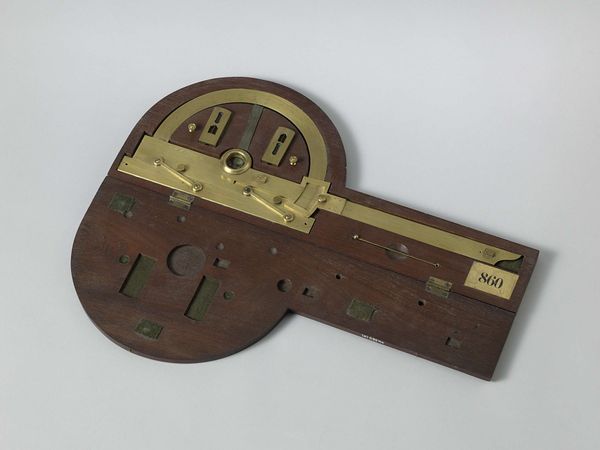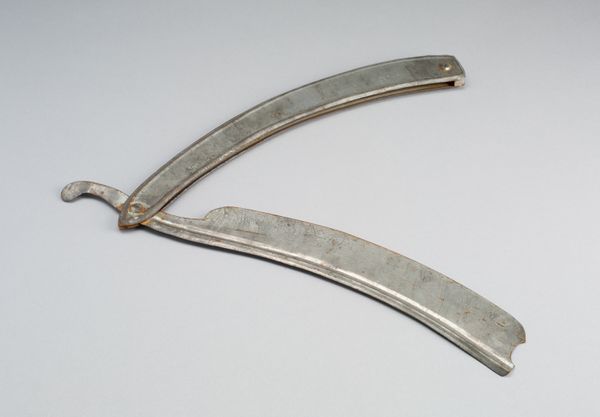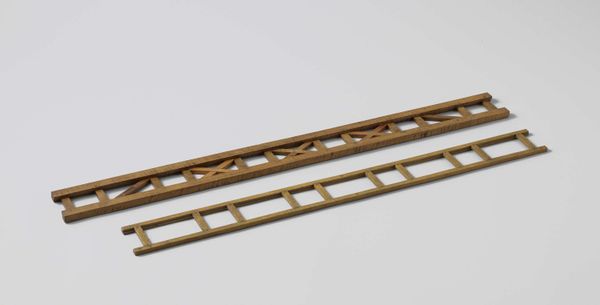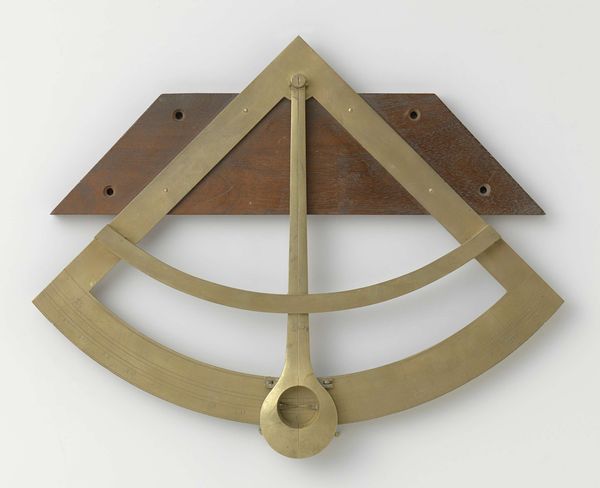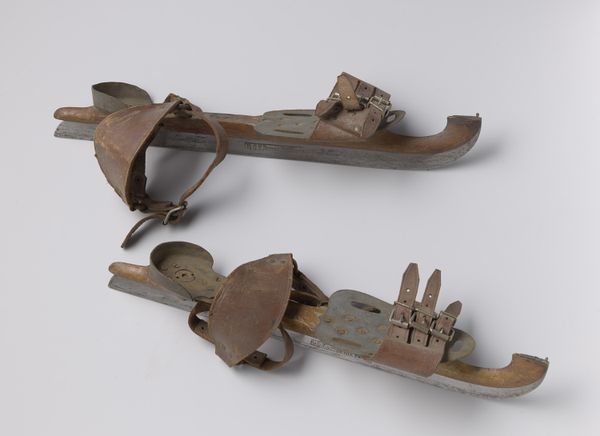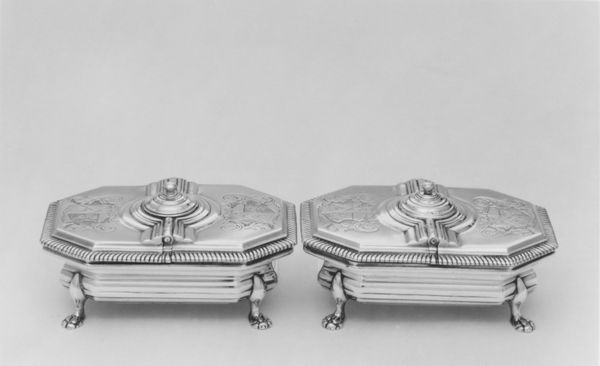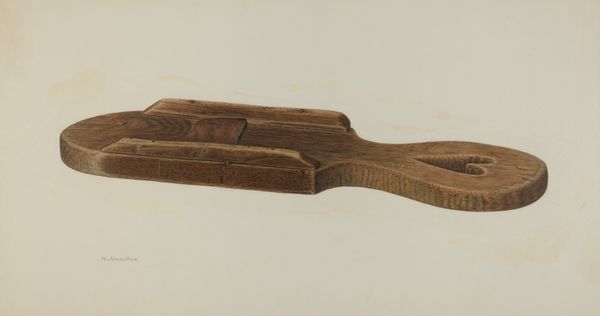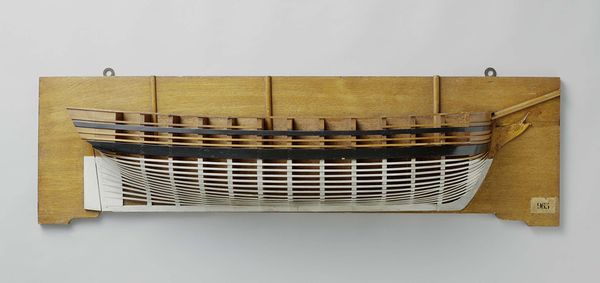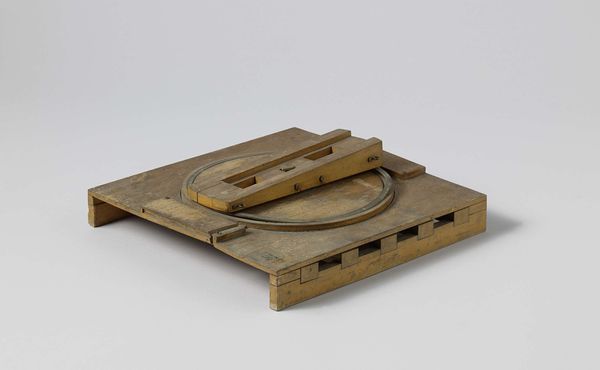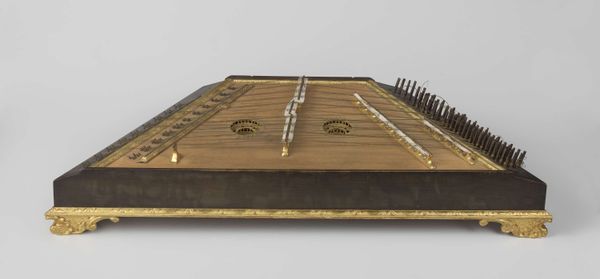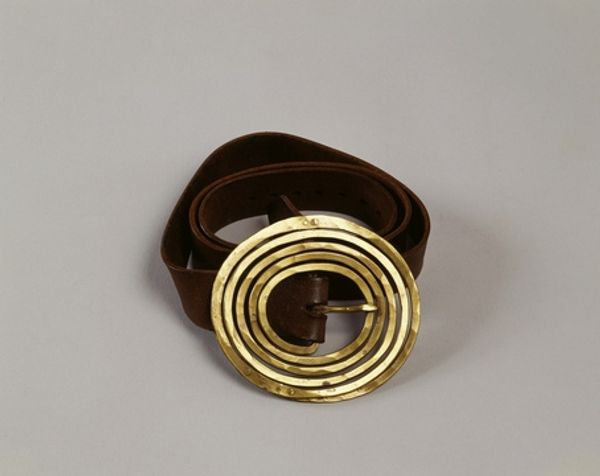
#
natural stone pattern
#
circular oval feature
#
3d printed part
#
rounded shape
#
virtual 3d design
#
round design
#
sculptural image
#
3d shape
#
3d digital graphic
#
cutout
Dimensions: (A) height 25.5 cm, (A) width 32.2 cm, (A) depth 3 cm, (B) height 24.8 cm, (B) width 32 cm, (B) depth 2.4 cm
Copyright: Rijks Museum: Open Domain
Editor: So, here we have "Two Quadrants," crafted between 1793 and 1808 by Jan Marten Kleman. They seem to be made of brass and wood. There's something austere yet elegant about their geometrical precision. How do you read this piece? What historical narrative might they hold? Curator: Given their date and construction, these quadrants likely functioned as navigational instruments, vital for maritime expansion and trade during a period of intense geopolitical rivalry. Consider how these tools embodied the spirit of Enlightenment rationality while simultaneously enabling imperialistic ambitions. Editor: So, they're beautiful, functional…and implicated. Does their presence in a museum change or comment on their original role, and what do you make of the pairing? Curator: Absolutely. Presenting them within a museum setting inherently shifts their function. They transform from practical tools into objects of contemplation and historical inquiry. The act of displaying them encourages reflection on how scientific advancement intersected with – and indeed fueled – exploration, colonization, and global power dynamics. I wonder if the pairing alludes to the standardization and industrial processes of instrument making during the period, too. What is your feeling? Editor: I think you might be onto something, the level of accuracy seems so high. And as objects they really embody Enlightenment ideas. I am rethinking their role and impact. Curator: Precisely. They serve as tangible reminders of a complex and often contradictory past, inviting us to critically examine the legacy of scientific progress and its broader social consequences. Thinking about them outside the limitations of mere navigation sheds an important light on 18th century exploration. Editor: Thank you so much. I see so much more now, beyond the surface beauty of them.
Comments
No comments
Be the first to comment and join the conversation on the ultimate creative platform.
